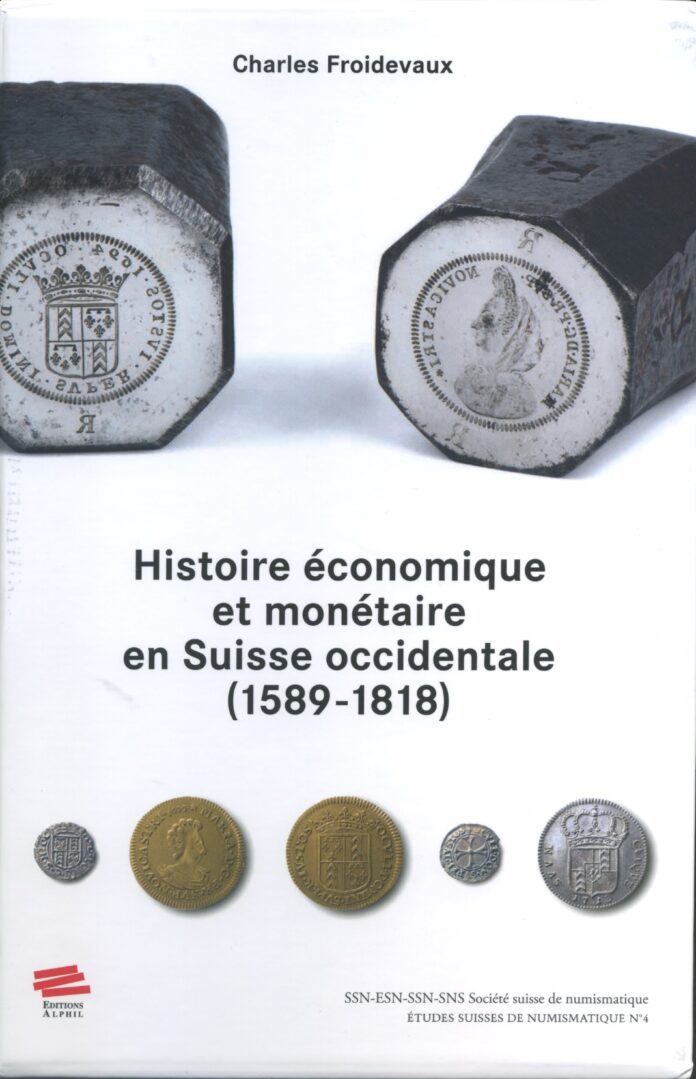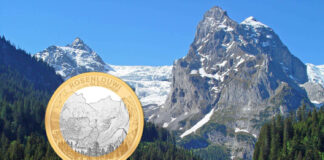
There are books that already demand your respect if you only see them lying in front of you. You know immediately how much weight they have and how much work they required. Such books are more than a few pages of printed paper. They are a life’s work, the life’s work of an enthusiast.
What coin lovers can achieve
Charles Froidevaux’s interest in coins from Neuchâtel is presumably well-known to anyone who ever met him at a coin fair or at a numismatic conference. He is full of their stories, knows how to tell them and, while doing so, he radiates an enthusiasm that only true coin lovers can radiate. This enthusiasm and 25 years of meticulous research are the foundation of the book, well, what book, actually we are dealing with three books in a slipcase (of course in French!) bearing together the title “Economic and Monetary History of Western Switzerland (1589 to 1818)”.
The catalogue of the coins from Neuchâtel
Let us start with volume 2, presumably the key innovation with regard to coin trade. It is a type catalogue of the coins from Neuchâtel between 1589 and 1818. Anyone who has to draft an auction catalogue under time pressure will love it. The reason is that within the about 260 pages, all 460 coin types are arranged extraordinarily clearly and in a manner that makes them easy to find. For everyone who does not like to consult table of contents (and this includes most coin dealers I know): a wonderful colour system was used to make it easy to jump from one regent to another. Within the parts of the different regents, the coins are sorted by their value, the highest denominations first. Each main type is described and illustrated in detail; the deviations of the varieties are described precisely. Very useful – especially for small change – are the included drawings, in the event that the picture does not show enough details in order to perform a simple determination. In addition, you can find detailed information on the location, quotations and a statistical average weight. And, of course, the catalogue ends with a concordance to the previous standard work in the field of the coinage of Neuchâtel published in 1939.
The monetary history of Neuchâtel
The catalogue alone is already a benefit for the numismatic world. It is complemented by two further volumes. The first of them bears the title “Power, Coins and Counterfeits”, it is the actual monetary history of Neuchâtel. Of course, the monetary and the economic history of all the surrounding areas had to be reconstructed for this volume, and that is why Charles Froidevaux gave his work on Neuchâtel the encompassing title “Economic and Monetary History of Western Switzerland”.
It is an extensive work, and Charles Froidevaux invested many hours into the solid study of source material. In the introduction, the author himself sets out the focal points:
- He deals with the coordination of the German-speaking and the French-speaking part of the currency area of Bern, which covered all the western regions of Switzerland from the Aargau to Geneva, in 1590.
- Furthermore, he addresses the accession of the County of Neuchâtel to this system after the death of Marie de Bourbon and the reopening of Neuchâtel’s mint in 1589.
- The author is particularly interested in the importance of the monetary system, Bern’s power and the influence of foreign policy economic crises on the region.
- And anyone who knows Charles Froidevaux knows that a detailed discourse on counterfeiting is a must.
The “waste product”: comprehensive genealogical studies
The third volume contains everything that was of importance for the analysis but did not fit into the first volume. It bears the title “Economic, Numismatic and Political Sources and the Power of the Families”. This volume does not only contain the 31 annexes of the first volume which were to exhaustive to put them into the comments. It also comprises numerous meticulously researched and detailed genealogies, which Charles Froidevaux compiled for his dynasties of counterfeiters and for the members of the council of Neuchâtel.
Anyone who does not feel comfortable in the French language finds here, thankfully, a German summary of the book. However, it is a bit surprising that embarrassing spelling mistakes were made in the titles (of all places!), even though – besides this – the German translation is very well done. The reviewer suspects that this was a deliberate choice so that the reviewers of this work could at least say something negative about it.
The book ends with about 10 pages of bibliography, a name index and a detailed table of contents of all three volumes.
It is always a special experience to hold a book (or three books) in one’s hand written by a collector who became the top expert in this field purely because of his passion. And we are grateful that Charles Froidevaux did not keep his findings to himself – unlike many other collectors that do so because of false anxiety about what the established scientists might say. This book is a must for everyone interested in Swiss numismatics of the early modern period.



